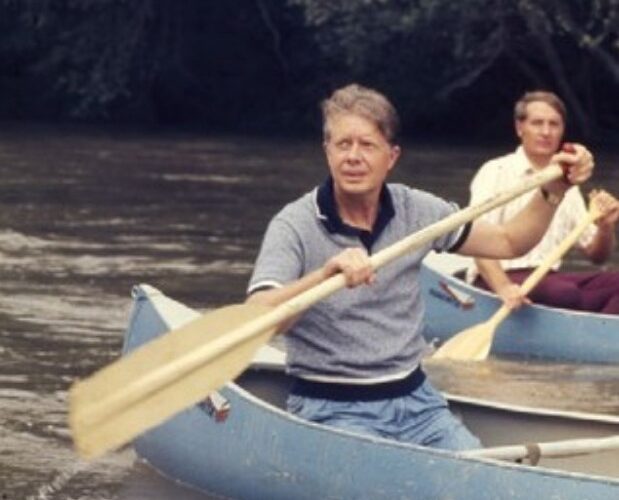During our year-long River Relay, CRK staff members traversing the river from its headwaters to its terminus encountered sights not often seen by other river users. As our CRK team pulled up to a boat ramp at Walter F. George Dam in December 2019, a yellow sign read “Caution – Alligators May Be Present.” This is not a usual sight at parks and boat ramps lining the upper and middle sections of the Chattahoochee, where our field work has been most active during the past 26 years.
The American Alligator (Alligator mississippiensis) lives in the swamps, marshes, rivers, ponds and lakes south of the Georgia fall line, which is the geological boundary that runs northeast across Georgia from Columbus to Augusta.
While stories of an alligator sighting in the upper and middle Chattahoochee circulate occasionally, their presence is likely due to relocation by humans. Alligators will only reproduce in the warmer waters of the Chattahoochee downstream of Columbus.
Tiny when they hatch (approximately 8 to 10 inches in length), fully grown alligators can span between 10 and 16 feet long. As adults, they are important predators in the ecosystems they inhabit and will eat almost anything they can catch including fish, turtles, snakes, waterfowl, raccoons, beavers and otters. Given the chance, they have also been known to eat pets and small farm animals such as goats and pigs.
When the weather turns chilly, alligators adapt by digging a “gator hole” along a waterway and go dormant. Even though CRK staff did not get to spot any of these remarkable creatures during our trip, it remains exciting to think about these giant reptiles living among us as we spend more time down river.
This story was originally published in the Winter 2020 edition of RiverCHAT.



